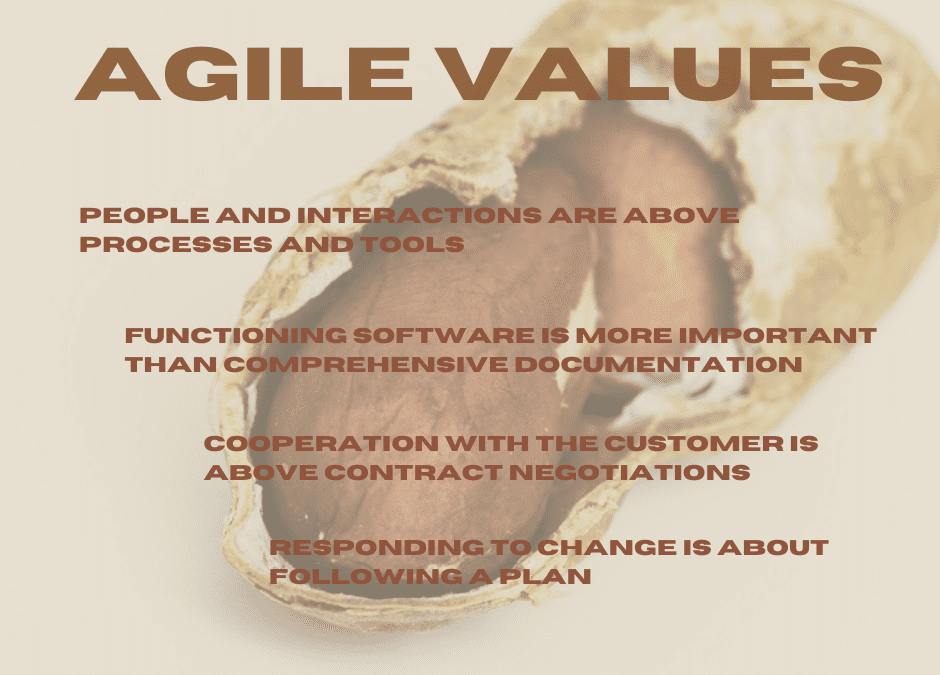More and more hierarchically structured organisations are discovering the topic of agility, mostly due to IT projects that are handled “differently” than classic “waterfall projects”.
The people who carry out these projects are usually viewed critically by the rest of the organisation. In the best case, a particular curiosity arises as to what it is that these colleagues are doing differently than before.
In such a situation, the impression can quickly arise that if you apply this “new” project method, you are already agile. Often the image is created that this new way of working is entirely chaotic, or much too complicated for everyday life. Only when you get to grips with the different methods more intensively, even a newcomer will quickly notice that the agile methods have clear rules, need entirely highly developed employees both personally and professionally to function well.
But that is not enough – agility is an attitude that is subject to a different set of values and principles than those known from classic hierarchically managed cooperation and leadership models.
In a small series of articles we now want to get to the bottom of this topic and successively roll up the aspects of agility.
This time the focus is on agile values.
If you search the net for agile values, you will always come across the agile manifesto, which is the source for most “agileists” when it comes to this topic. It was formulated in 2001 in Utah by 17 software developers.
According to the Agile Manifesto, agile values are
- People and interactions are above processes and tools
- Functioning software is more important than comprehensive documentation
- Cooperation with the customer is above contract negotiations
- Responding to change is about following a plan
These four values describe areas of tension in which one moves while working, and they determine where the focus should be without completely neglecting the other side.
What you can see from these formulations is that the agile methods rely heavily on interaction/communication, that work is done in small, interactive steps, that the focus is on the benefit for the customer, and that it is assumed that the goal is not or cannot be fully clarified at the beginning of the project and that one must react to change.
Another set of values can be encountered when dealing with one of the best known agile methods – Scrum. There you will find:
Courage: The members of the Scrum Team dare to do the right thing and work on challenging problems.
Concentration: Everyone concentrates on the work of the sprint and the tasks of the Scrum Team.
Commitment: The team members are personally committed to achieving the goals of the Scrum team
Respect: The members of the Scrum team respect each other as capable, independent people
Openness: The Scrum Team and its stakeholders agree to speak openly about all the work and the challenges in carrying it out.
(Source: scrum.org)
If you take a closer look at these values, it is noticeable that there are already some requirements as to how the environment must be set up enable people following these values:
To be courageous, in the sense of the SCRUM values:
You need an organisational structure, which allows self-organised work.
To be able to concentrate on the work in a sprint:
A sprint must be planned in such a way that the Scrum team is not overwhelmed by day-to-day business issues or that the time slots reserved for project work can really be used.
To be able to the committ on the results:
I need to understand my business, as a team member. I should be an expert in my subject.
To respect others:
I must have an attitude that values cooperation with others, that is team-oriented. If my organisation only evaluates and values individual achievements, it is a difficult task.
To be open:
An organisation must be healthy, and the culture should be geared towards learning together.
What comes first – introducing an agile method or gradually getting the organisational culture fit to live agile values?
In our opinion, agility begins completely method-free in mind. If a company wants to become more agile to become better, to become faster, or to become better with complexity, you are well-advised to work very intensively on developing an agile mindset alongside pilot projects – and this starts by addressing the values mentioned above and ensuring that these are always better managed within the company.
Leading by example,shoud be the choice.


Recent Comments